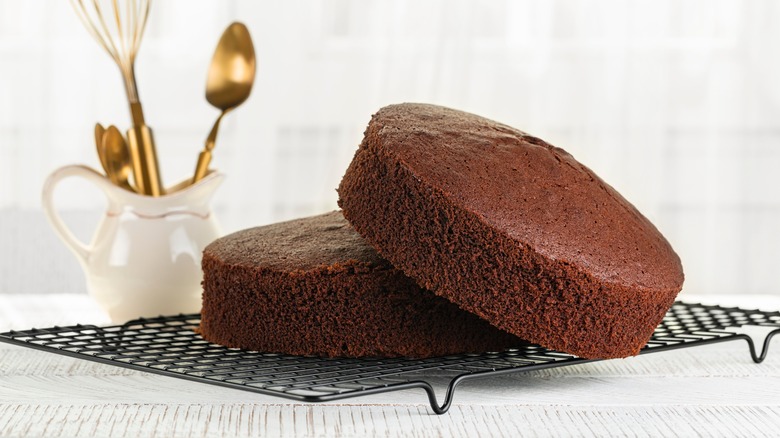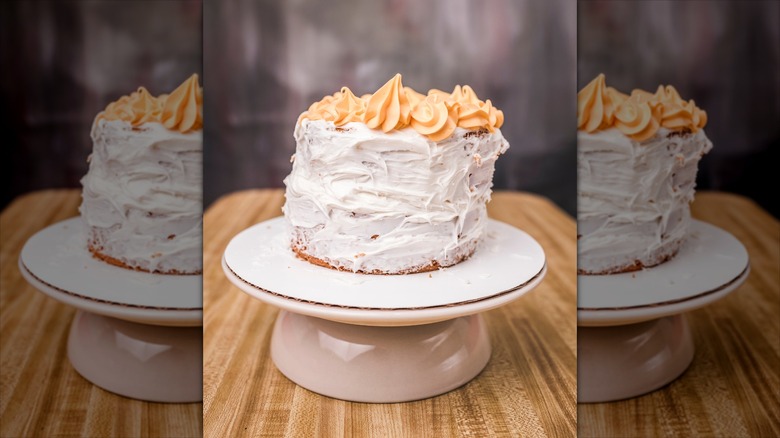Why You Should Never Stack Untrimmed Cake Layers
When you bake a cake, you might assume that the hardest part of the process is making the batter. You have to make sure that your measurements are exact, that you separate the wet from dry ingredients, and that you don't over or under mix it. But even if this results in a perfectly baked cake, the real challenge comes with decorating. Aside from letting the cake cool completely before you frost it, it's also important to start off with trimmed cake layers.
According to Southern Living, trimming a cake simply entails shaving off any pieces that may be slightly out of place. That might be a domed top, or an edge that rose a little higher than the others in the oven. Per Southern Living's instructions, all you need to do is take a long serrated knife, and little by little trim away that excess cake after it cools as a warm cake will be too fragile for trimming.
In addition to making it easier to decorate, trimming also prevents lopsided cakes.
Trimming is key to your cake's aesthetic
An untrimmed cake will taste just as good as a trimmed one, but appearance wise, a trimmed cake will always look better. Even if your cake appears to be perfectly round, as Fine Cooking explains, the bottom may be uneven. If this is the case, when you go to stack your cake, it'll be lopsided. Not only can sloped layers be a bit of an eyesore, they can also cause your cake to come crashing down, with the frosting creating a sort of slip-and-slide out of its layers.
For best results, Fine Cooking suggests to first cool the cake layers on thin, round wire racks to minimize any indentations. Then before stacking your cakes, make sure they are flat on both the top and the bottom, trimming where necessary. Sugar Geek Show suggests outlining the cake with small cuts before slicing all the way in, and being gentle with the knife to avoid worsening the sloping.
If done right, you should end up with a cake that's shaped well and tastes delicious.

